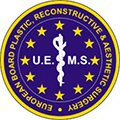
WHAT IS AN ABDOMINOPLASTY?
Abdominoplasty, or tummy tuck, or abdominal dermolipectomy is the surgery designed to correct the excess of skin and fat and weakness of the abdominal wall. The goal is to get a flat tummy, with good muscle tone and a youthful-looking belly button.
WHO IS A GOOD CANDIDATE FOR INTERVENTION?
Some of the characteristics of these patients are:
– Excess or sagging of the abdominal skin.
– Abdomen that stands out disproportionately with respect to the rest of the body.
– Weakened abdominal muscles (age, pregnancies…).
– Excess of accumulated fat.
WHAT IS VALUED AT THE FIRST VISIT?
The first visit is the main step for the patient who has thought about the possibility of having a tummy tuck.
Some of the characteristics that are evaluated during the consultation are:
– Medical and surgical history.
– Regular medication.
– Quality and elasticity of the abdominal skin.
– Existence of previous scars.
– Amount and location of excess fat.
– Abdominal musculature status.
– Possible presence of abdominal hernias.
WHAT SHOULD I TAKE INTO ACCOUNT BEFORE THE INTERVENTION? PREOPERATIVE RECOMMENDATIONS
There are some considerations that must be taken into account:
– Avoid certain medications that may complicate the intervention.
– Quit smoking for a period of time, before and after the intervention, as it is shown that tobacco worsens and makes wound healing difficult and can cause postoperative complications.
– Keep in mind that you will need some help after the intervention.
WHAT SHOULD I TAKE INTO ACCOUNT AFTER THE INTERVENTION? POSTOPERATIVE RECOMMENDATIONS
Some recommendations include:
– Avoid tobacco.
– Take the prescribed postoperative medication.
– Relative rest of one week.
– Use a girdle for a postoperative period of time.
HOW IS AN ABDOMINOPLASTY PERFORMED?
Through an incision in the upper part of the pubic area and around the navel, the abdomen muscles are accessed. They are sutured on themselves to reinforce the abdominal wall (which is usually weakened by pregnancy or weight changes) . Then, excess excess skin is trimmed, getting a flat stomach.
WHERE IS THIS INTERVENTION PRACTICED?
This intervention is performed in a hospital, and the duration is between 2 and 3 hours. The necessary stay in the hospital will be one to two days. Normally, general anesthesia is used.
WHAT IS THE EVOLUTION AND CONTROLS AFTER THE INTERVENTION?
Although each patient has its own particularities, the postoperative course contains some phases common to all patients:
During the first week:
The drains and some stitches will be removed.
Haematomas and inflammation will reach their peak.
During the second week:
The rest of the stitches will be removed.
Haematomas and inflammation will start to disappear and the results will start to be evident.
You can progressively rejoin your work activity.
At 4 postoperative weeks:
You won’t need to wear the girdle any more.
You can start progressive physical exercise.
After several months
The feeling of swelling and tightness will disappear.
Progressively the incision line will clear up until it becomes very similar to normal skin.
Although shortly after the intervention you will notice an important difference in the shape of your body, the final result is obtained at 6-12 months.
WHAT SHOULD I KNOW ABOUT THE RESULTS?
In general, the results of tummy tuck are very durable. Unless you experience a significant weight change, you can maintain your new figure for many years.
CAN YOU COMBINE WITH OTHER SURGERIES?
Yes, in fact the tummy tuck is a surgery that is usually combined with other techniques in the same act, such as liposuction or breast surgery.
ARE THERE CONTRAINDICATIONS FOR THIS SURGERY?
Each case must be assessed individually. Even so, some contraindications for this surgery are heavy smokers who do not plan to interrupt these habit or obese patients who must lose a lot of weight.
ARE THERE OTHER ALTERNATIVES?
Each case must be assessed individually, depending on its anatomy and surgical objectives.
For example, some patients might need more a liposuction or limited type of tummy tuck (mini-abdominoplasty).
WHAT IS MINIABDOMINOPLASTY?
It is a limited dermolipectomy technique. It allows to improve the appearance of the abdominal area below the navel. This surgical technique only requires a small horizontal incision. It is important to keep in mind that mini-tummy tuck does not correct the accumulated skin above the navel, so you have to assess each case individually.



